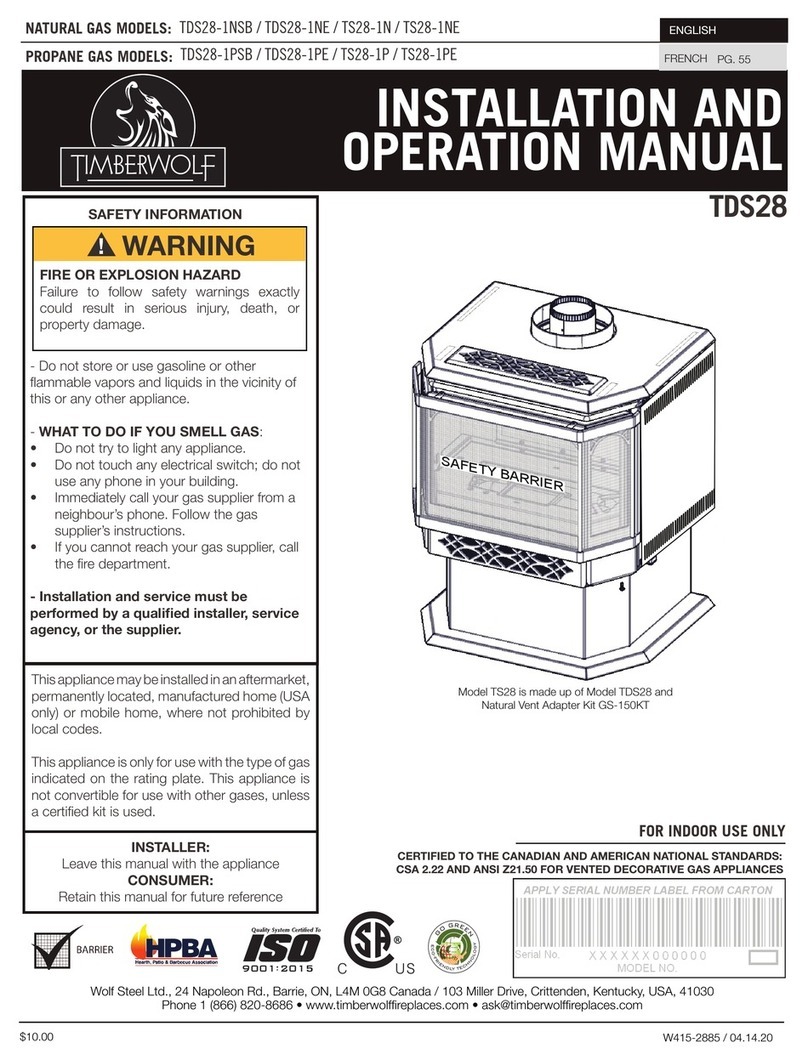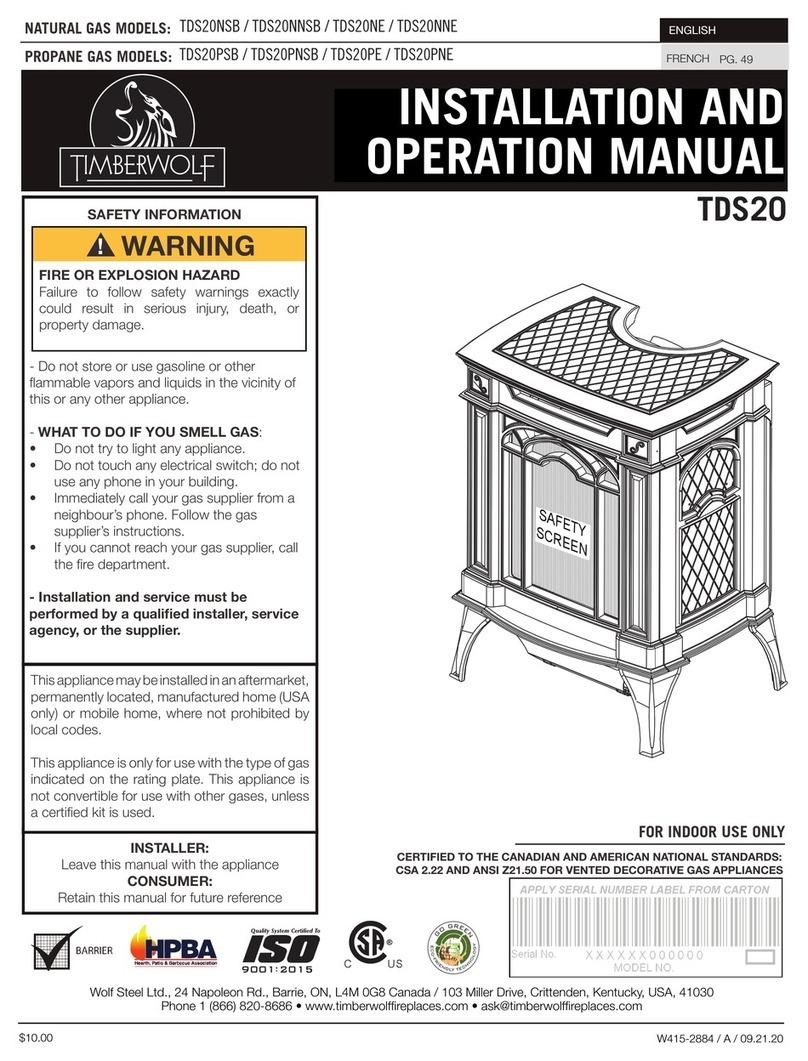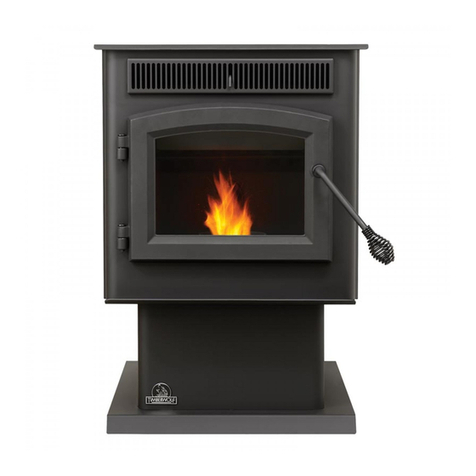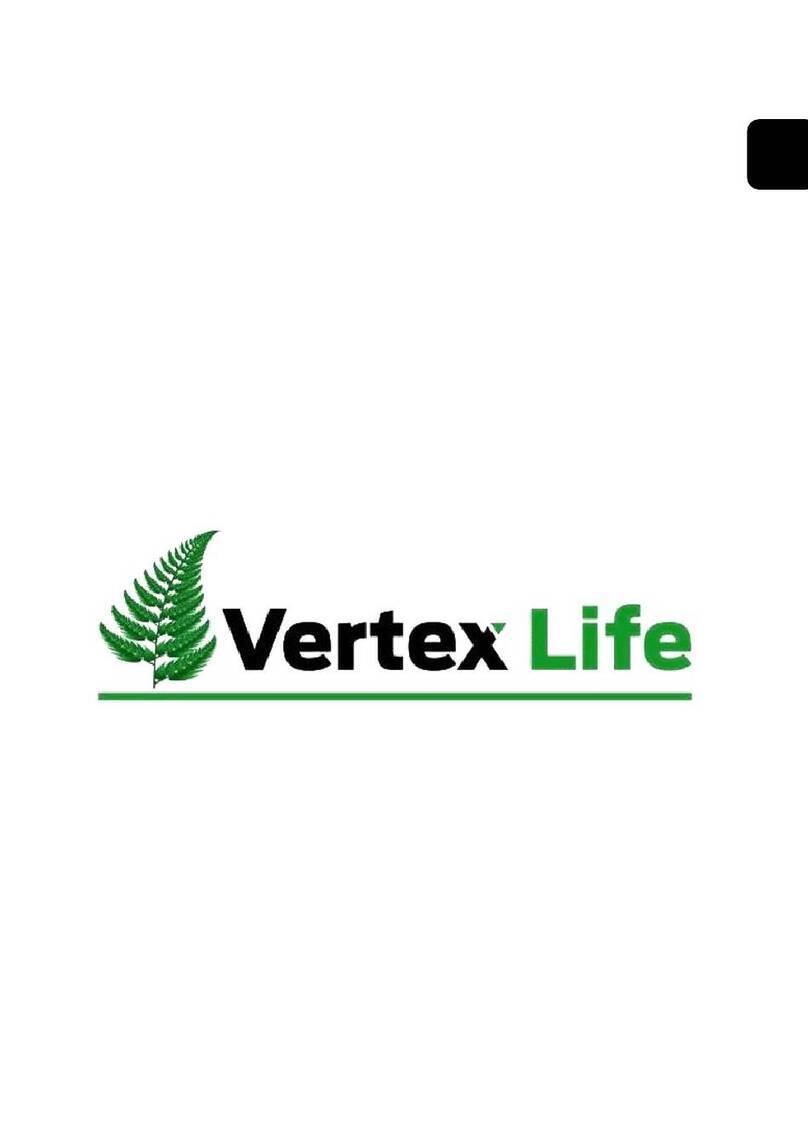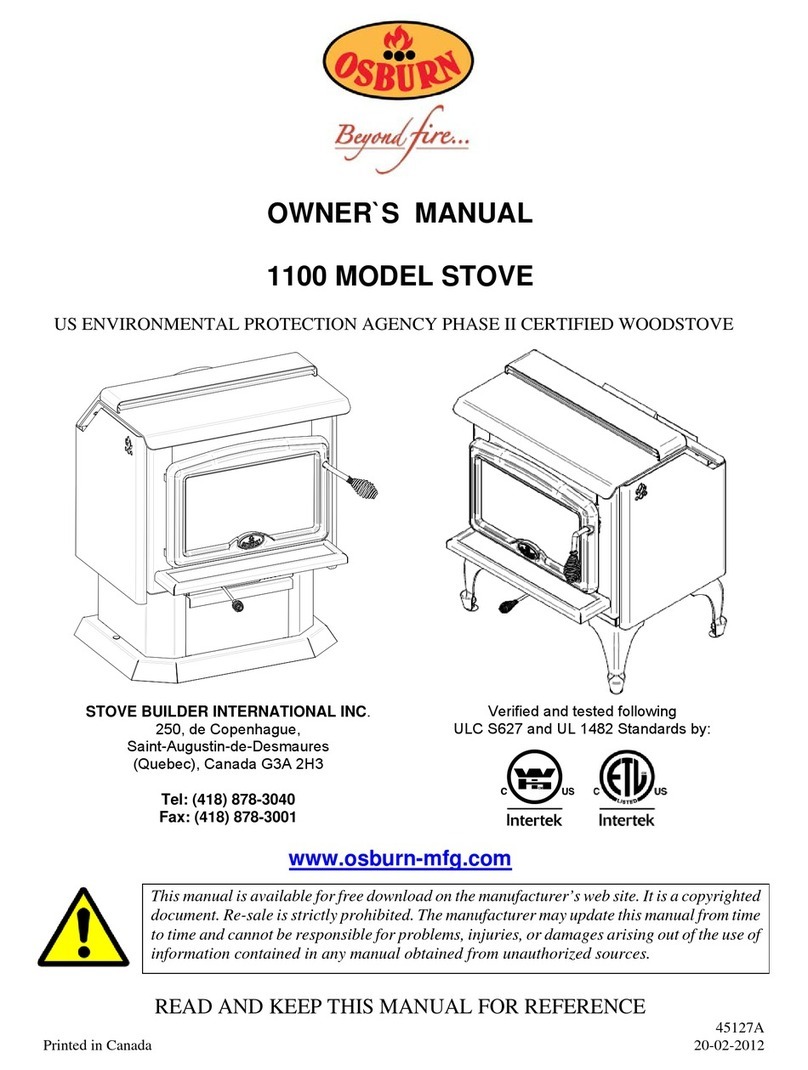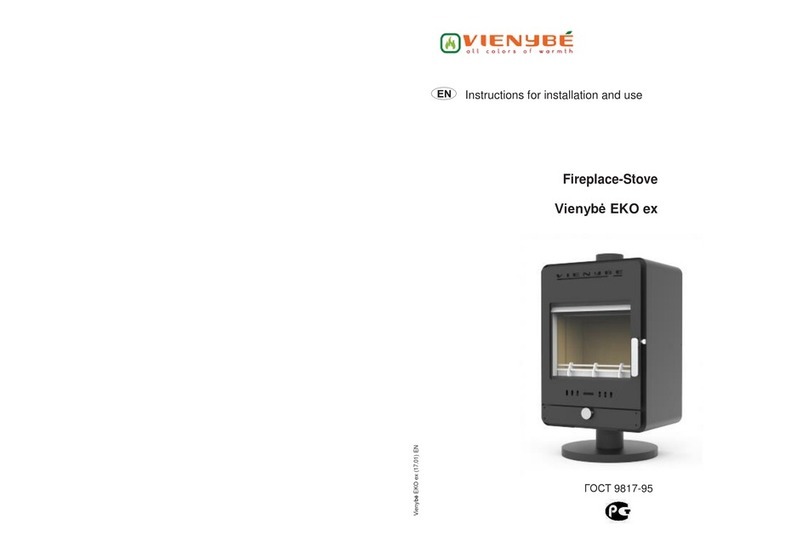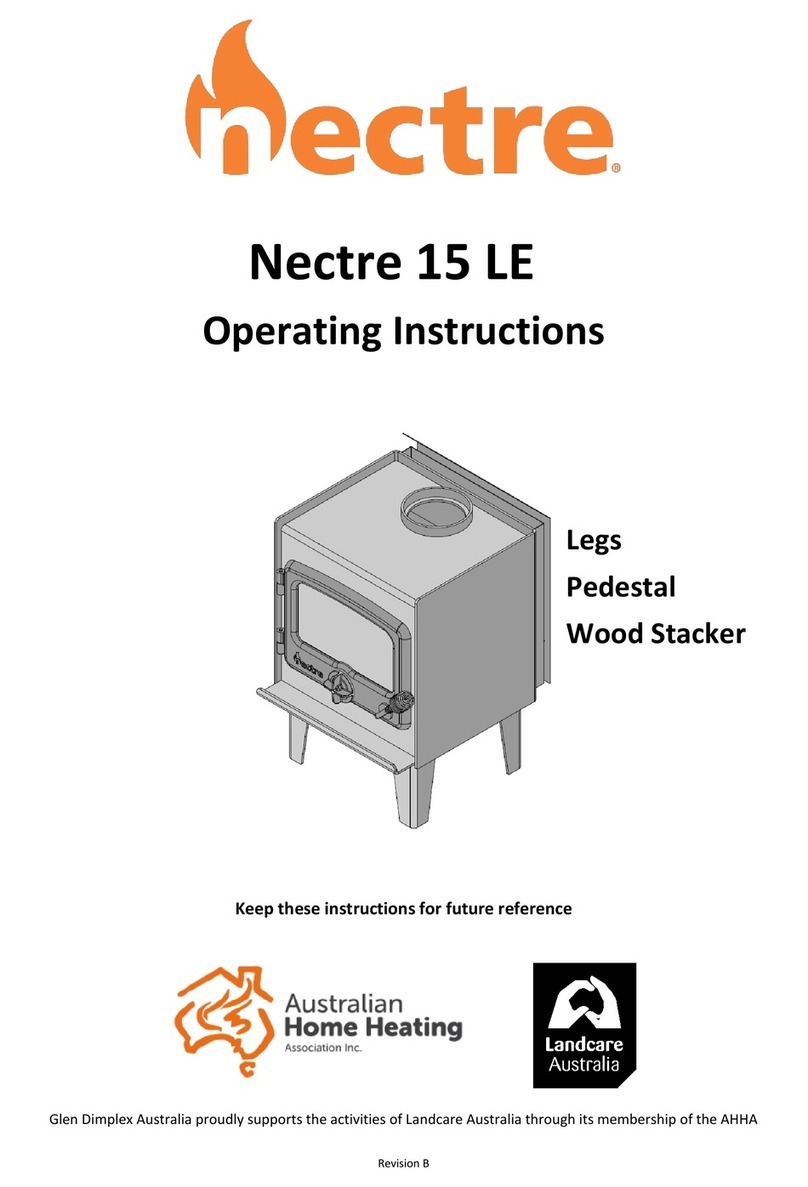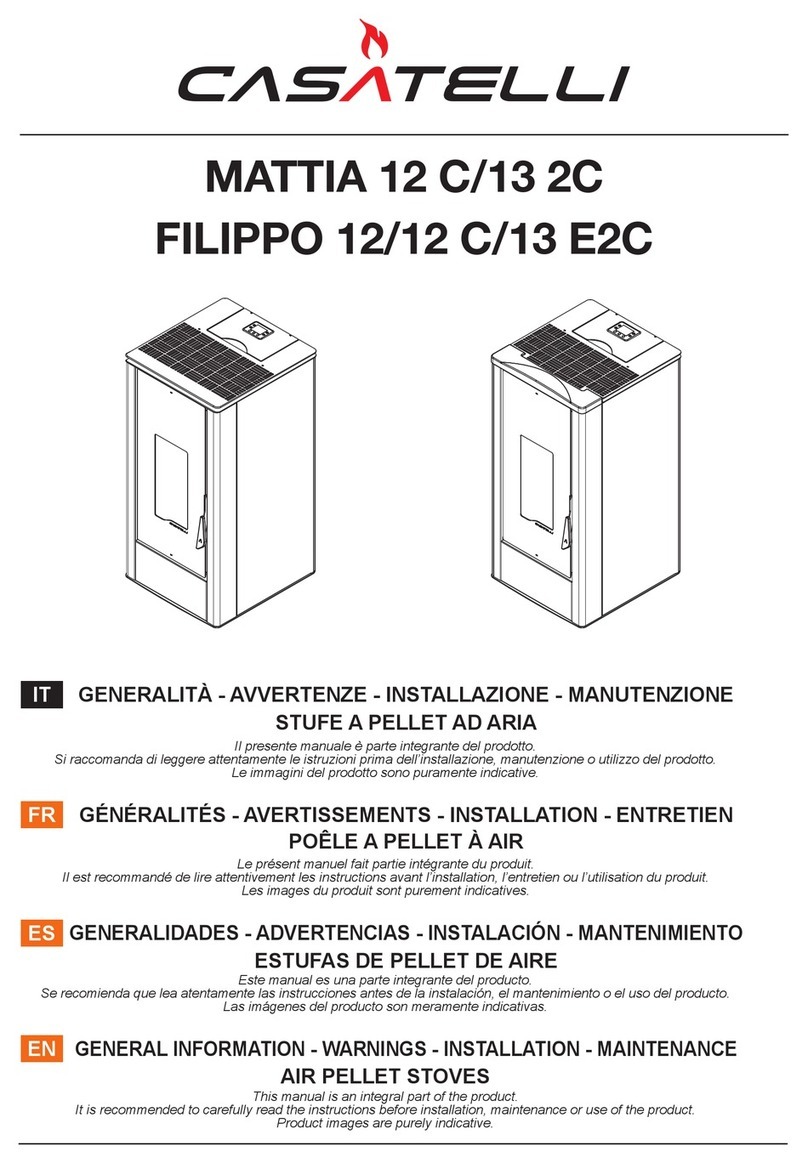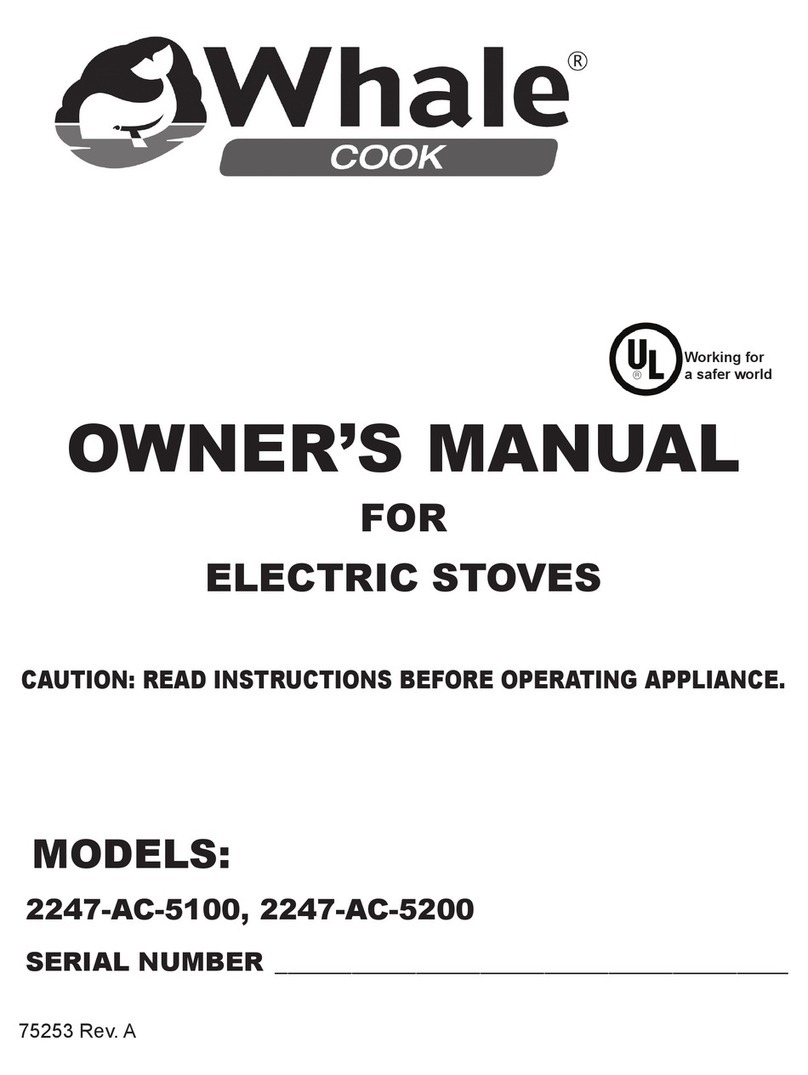Timberwolf 2300 User manual

1
W415-0892 / A / 05.04.11
INSTALLER: LEAVE THIS MANUAL WITH THE APPLIANCE.
CONSUMER: RETAIN THIS MANUAL FOR FUTURE REFERENCE.
INSTALLATION AND
OPERATING INSTRUCTIONS
1.19A
SAFETY INFORMATION
!WARNING
If the information in these instructions is not followed exactly, a
fire or explosion may result causing property damage, personal
injury or death. Improper installation, adjustment, alteration,
service or maintenance can cause injury or property damage,
bodily injury or even death. Please read entire manual before
you install and use your appliance.
This appliance has not been tested with an unvented gas log
set. Do not install an unvented gas log set into the appliance.
- This appliance can be very hot when burning.
- Combustible materials such as firewood, wet clothing, etc. placed too
close can catch fire.
- Children and pets must be kept from touching the appliance when it is hot.
- The chimney must be sound and free of cracks. Before installing this unit,
contact the local building or fire authority and follow their guidelines.
- Operate only with the door tightly closed.
- Burn wood behind the log retainer directly on the firebricks.
- Do not use an elevated grate or otherwise raise the fire.
- At least 14 square inches of outside air must be admitted to the room or
directly to the unit through a 4” diameter pipe.
- This appliance is designed to burn natural wood only. Higher efficiencies
and lower emissions generally result when burning air dried seasoned
hardwoods, as compared to softwoods or to green or freshly cut
hardwoods.
- Do not start a fire with chemicals or fluids such as gasoline, engine oil,
etc.
- Do not burn treated wood, coal, charcoal, colored paper, cardboard,
solvents or garbage.
- Do not let the appliance become hot enough for any part to glow red.
- KEEP THE STOVE TOP TEMPERATURE BELOW 700°F (371°C). Attempts to
achieve heat output rates that exceed design specifications can result in
steel distortion and damage.
Wolf Steel Ltd., 24 Napoleon Rd., Barrie, ON, L4M 0G8 Canada /
103 Miller Drive, Crittenden, Kentucky, USA, 41030
Phone (705)721-1212 • Fax (705)722-6031 • www.timberwolffireplaces.com • ask@timberwolffireplaces.com
$10.00
2300
PEDESTAL MODEL
CERTIFIED UNDER U.S. ENVIRONMENTAL PROTECTIONAGENCY (E.P.A.) JULY 1990 40 C.F. R. PART 60AND THE OREGON DEPARTMENT OF ENVIRON-
MENTAL QUALITY (D.E.Q.) PARTICULATE EMISSION STANDARDS BY E.E.M.C THESE STOVES HAVE BEEN TESTED AND LISTED BY INTERTEK TESTING
SERVICES TO STANDARDS: CSA B366.2, ULC S627, UL 1482.

2
W415-0892 / A / 05.04.11
NOTE : Les changements autres que de nature éditoriale sont dénotés par une ligne verticale dans la
marge.
TABLE OF CONTENTS
1.0 INSTALLATION OVERVIEW 3
2.0 INTRODUCTION 4
2.1 DIMENSIONS 5
2.2 SPECIFICATIONS 5
2.3 GENERAL INSTRUCTIONS 5
2.4 GENERAL INFORMATION 6
2.5 RATING PLATE INFORMATION 7
3.0 PRE-INSTALLATION PREPARATION 8
3.1 APPLIANCE PLACEMENT 8
3.2 CLEARANCE TO COMBUSTIBLES 8
3.3 FLOOR PROTECTION 8
3.4 OUTSIDE AIR 9
4.0 INSTALLATION 10
4.1 CHIMNEY 11
4.1.1 CHIMNEY CONNECTION 12
4.1.2 ADDING SECTIONS 13
4.1.3 TYPICAL THROUGH THE CEILING 14
4.1.4 TYPICAL THROUGH THE WALL 15
4.1.5 TYPICAL EXISTING MASONRY 16
5.0 FINISHING 17
5.1 DOOR REMOVAL / INSTALLATION 17
5.2 DOOR HANDLE INSTALLATION 17
5.3 BRICKS AND BAFFLE INSTALLATION 18
6.0 OPTIONAL KIT INSTALLATIONS 19
6.1 OPTIONAL BLOWER INSTALLATION 19
7.0 OPERATION 20
7.1 AIR CONTROL 21
7.2 FIRE EXTINGUISHERS / SMOKE DETECTORS 21
7.3 FUEL 22
7.4 LIGHTING A FIRE 22
7.4.1 FLASH FIRE 22
7.4.2 EXTENDED FIRE 23
7.5 SMOKING 23
8.0 MAINTENANCE 24
8.1 ASH REMOVAL PROCEDURES 24
8.2 CREOSOTE FORMATION AND REMOVAL 25
8.4 RUNAWAY OR CHIMNEY FIRE 25
8.3 CHIMNEY CLEANING 25
8.5 GLASS REPLACEMENT 26
8.6 GASKET REPLACEMENT 26
8.7 CARE OF GLASS 27
8.8 CARE OF PLATED PARTS 27
8.9 WOOD 28
9.0 REPLACEMENTS 29
10.0 TROUBLESHOOTING 30
11.0 WARRANTY 31
12.0 SERVICE HISTORY 32

3
W415-0892 / A / 05.04.11
1.0 INSTALLATION OVERVIEW
Door, see “DOOR
REMOVAL /
INSTALLATION”
section.
Handle, see “DOOR
HANDLE INSTALLATION”
section.
Draft, see “DRAFT
CONTROL” section.
Ash, see “ASH REMOVAL
PROCEDURES” section.
Outside air, see “OUTSIDEAIR”
section.
Blower, see
“OPTIONAL BLOWER
INSTALLATION”
section.
Rating plate, see
“RATING PLATE
INFORMATION”
section.

4
W415-0892 / A / 05.04.11
2.0 INTRODUCTION
3.17C
!
WARNING
• THIS APPLIANCE IS HOT WHEN OPERATED AND CAN CAUSE SEVERE BURNS IF CONTACTED.
• ANY CHANGES OR ALTERATIONS TO THIS APPLIANCE OR ITS CONTROLS CAN BE DANGEROUS AND
IS PROHIBITED.
• Do not operate appliance before reading and understanding operating instructions. Failure to operate appliance
according to operating instructions could cause fire or injury.
• Before installing this appliance, contact the local building or fire authority and follow their guidelines.
• This appliance must be installed by a qualified installer.
• Risk of burns. The appliance should be turned off and cooled before servicing.
• Do not operate without fully assembling all components.
• Do not let the appliance become hot enough for any part to glow red.
• Do not install damaged, incomplete or substitute components.
• Risk of cuts and abrasions. Wear protective gloves and safety glasses during installation. Sheet metal edges
may be sharp.
• Children and adults should be alerted to the hazards of high surface temperature and should stay away to avoid
burns or clothing ignition.
• Young children should be carefully supervised when they are in the same room as the appliance. Toddlers,
young children and others may be susceptible to accidental contact burns. A physical barrier is recommended if
there are at risk individuals in the house. To restrict access to an appliance or stove, install an adjustable safety
gate to keep toddlers, young children and other at risk individuals out of the room and away from hot surfaces.
• Clothing or other flammable material should not be placed on or near the appliance. Objects placed in front of
the appliance must be kept a minimum of 48” away from the front face of the appliance.
• Due to high temperatures, the appliance should be located out of traffic and away from furniture and draperies.
• Ensure you have incorporated adequate safety measure to protect infants/toddlers from touching hot surfaces.
• Even after the appliance is out, the glass and/or screen will remain hot for an extended period of time.
• Check with your local hearth specialty dealer for safety screens and hearth guards to protect children from hot
surfaces. These screens and guards must be fastened to the floor.
• Any safety screen or guard removed for servicing must be replaced prior to operating the appliance.
• Under no circumstances should this appliance be modified.
• This appliance must not be connected to a chimney flue pipe servicing a seperate solid fuel burning appliance.
• Do not operate the appliance with the glass door removed, cracked or broken. Replacement of the glass should
be done by a licensed or qualified service person.
• Do not strike or slam shut the appliance glass door.
• Operate only with the doors tightly closed.
• Only doors / optional fronts certified with the unit are to be installed on the appliance.
• Keep the packaging material out of reach of children and dispose of the material in a safe manner. As with all
plastic bags, these are not toys and should be kept away from children and infants.
• If the appliance is not properly installed, a house fire may result. Do not expose the appliance to the elements
(ex. rain, etc.) and keep the appliance dry at all times. Wet insulation will produce an odour when the appliance
is used.
• The chimney must be sound and free of cracks. Clean your chimney a minimum of twice a year and as required.
• Do not start a fire with chemicals or fluids such as gasoline, engine oil, etc.
• Your appliance requires periodic maintenance and cleaning. Failure to maintain your appliance may lead to
smoke spillage in your home.
• Higher efficiencies and lower emissions generally result when burning air dried seasoned hardwoods, as
compared to softwoods or too green or freshly cut hardwoods. Burning wet unseasoned wood can cause
excessive creosote accumulation. When this is ignited it can cause a chimney fire that may result in a serious
house fire.
• This appliance is designed to burn natural wood only. Do not burn treated wood, coal, charcoal, coloured paper,
cardboard, solvents or garbage.
• Burn wood directly on the firebricks. Do not elevate grate or otherwise raise the fire.
• Do not store wood within appliance installation clearances or within the space required for re-fueling and ash
removal.
• Ashes must be disposed in a metal container with a tight lid and placed on a non-combustible surface well away
from the home or structure until completely cool.
• Ensure clearances to combustibles are maintained when building a mantel or shelves above the appliance.
Elevated temperatures on the wall or in the air above the appliance can cause melting, discolouration or
damage to decorations, a T.V. or other electronic components.

5
W415-0892 / A / 05.04.11
SPECIFICATIONS 2300
CHAMBER (D.W.H) 22 ½” x 18” x 12”
CAPACITY 3.0 FT3
APPROX. AREA HEATED* 1000-3500 FT2
HEAT OUTPUT (HIGH BURN) ** 85,000 BTU
DURATION LOW FIRE* 12 HRS
WEIGHT w/o BRICKS 285 LBS
WEIGHT OF BRICKS 114 LBS
IDEAL WOOD LENGTH 21”
*Ces données peuvent varier considérablement selon les conditions particulières.
** BTU/h réalistes estimés par Wolf Steel Ltée avec des bûches de bois dur et un ravitaillement normal.
2.1 DIMENSIONS
4.7
ALL WIRING SHOULD BE DONE BY A QUALIFIED ELECTRICIAN AND SHALL BE IN COMPLIANCE WITH
LOCAL CODES. IN THE ABSENCE OF LOCAL CODES, USE THE CURRENT CSA22.1 CANADIAN
ELECTRIC CODE IN CANADA OR THE CURRENT NATIONAL ELECTRIC CODE ANSI/NFPA NO. 70 IN
THE UNITED STATES.
THIS APPLIANCE HAS NOT BEEN TESTED WITH ANY VENTED OR UNVENTED GAS LOG SET. TO
REDUCE RISK OF FIRE OR PREVENT INJURY, DO NOT INSTALL A VENTED OR UNVENTED GAS LOG
SET INTO THE APPLIANCE.
BURNING YOUR UNIT WITH THE ASH DUMP DOOR OPEN OR AJAR CREATES A FIRE HAZARD THAT
MAY RESULT IN DISCOLOURATION TO THE GOLD PLATED DOOR, INTERNAL DAMAGE TO THE
APPLIANCE OR A HOUSE CHIMNEY FIRE.
DO NOT CONNECT THIS APPLIANCE TO A CHIMNEY FLUE SERVING ANOTHER APPLIANCE.
THIS APPLIANCE AND IT’S COMPONENTS ARE DESIGNED TO BE INSTALLED AND OPERATED AS A
SYSTEM. ANY ALTERATION TO OR SUBSTITUTION FOR ITEMS IN THIS SYSTEM, UNLESS ALLOWED
BY THESE INSTALLATION INSTRUCTIONS, WILL VOID THE LISTING AND MAY VOID THE PRODUCT
WARRANTY. IT MAY ALSO CREATE A HAZARDOUS INSTALLATION. READ THROUGH THESE
INSTRUCTIONS THOROUGHLY BEFORE STARTING YOUR INSTALLATION AND FOLLOW THEM
CAREFULLY THROUGHOUT YOUR PROJECT.
!
WARNING
31 ¾”
25 ³/
8
”29
1
/
8
”7”
29
1
/
8
”
31”
12 ¾”
7”
25 ³/
8
”
2.2 SPECIFICATIONS
2.3 GENERAL INSTRUCTIONS

6
W415-0892 / A / 05.04.11
• Before beginning your installation, consult with your local building code agency or fire officials and
insurance representative to ensure compliance.
• Non-toxic smoke will be emitted during the paint curing process, to help dissipate the smoke open a
window near the appliance.
• Remove any dust or debris off the top of the appliance before firing the appliance as the paint will be-
come soft as the appliance heats up and will harden as the appliance cures. To cure the paint on your
appliance burn your appliance moderately hot during the first few fires.
• To keep the gasket from sticking to the appliance as the paint is curing, periodically open the door
every 5-10 minutes.
• For the first two weeks use generous amounts of fuel and burn the appliance with the damper wide
open for an hour as the appliance goes through a process of eliminating moisture in the steel and fire-
bricks. The initial heat output will be reduced while the moisture is being drawn from the appliance and
it will be necessary to build several hot fires to remove this moisture. DURING THIS PROCESS DO
NOT OVER FIRE THE APPLIANCE. REDUCE THE AMOUNT OF AIR COMING INTO THE APPLI-
ANCE IF THE APPLIANCE OR CHIMNEY BECOMES RED.
Your appliance has been specifically designed over many months of research to meet the 1990 U.S.A. EPA particu-
late emission standards and have been extensively tested in Canadian andAmerican laboratories. This system is
the most efficient, simple and trouble free we know and works as follows:
The chimney vent system used on your wood burning appliance should be designed with the least amount of
restriction possible to enable the exhaust products to easily flow through it. Chimney vent systems that are too
short or too long can also have an adverse affect on the flow of exhaust through it. The wood burning appliance
and chimney vent system also require a sufficient supply of combustion air not only to support the combustion in the
combustion chamber but to replace the exhaust leaving it so it can flow freely up through the vent system and out
into the atmosphere. It is the correct balance of combustion air and the chimney vent system that will ensure the
appliance provides you with its optimum performance.
Combustion air enters through two holes in the bottom
which can be adjusted by a single air control.Air from
the front hole goes up on either side of the door into a
preheating airwash located across the top and then down
the window to feed the fire and also to ensure that the
glass remains clean.Air from this hole also feeds directly
into the combustion chamber at hearth level. Secondary
air from the rear hole travels up the back in the secondary
air housing to the manifold located at the top and shoots
out laterally to oxidize the gases below the smoke exit.
The combustion chamber is lined with high temperature
firebrick on 2 sides, the back and across the bottom, with
a layer of fibre baffles at the top to maintain a high tem-
perature in the combustion chamber so that gases mixing
with the preheated air from the secondary air manifold
tube are easily ignited and burned. The appliance sides
and back are shielded to direct the heat upwards and
forwards into the room.
Be sure to provide sufficient combustion air. There are many other appliances in your home competing for air such
as: a kitchen range hood, forced air heating devices or a bathroom exhaust fan.
HOT SECONDARY AIR
FIBRE BRICKS
REFRACTORY
2 SIDES, BACK
& BOTTOM
SECONDARY AIR
PRIMARY AIR
FLUE GLASS
CERAMIC
GLASS
AIR CONTROL
COMBUSTION AIR
INTAKE
OPEN CLOSED
2.4 GENERAL INFORMATION
DO NOT OPERATE THIS APPLIANCE WITHOUT THE PEDESTAL INSTALLED.
!
WARNING

7
W415-0892 / A / 05.04.11
We suggest that our woodburning hearth products
be installed and serviced by professionals who are
certified in the U.S. by the National Fireplace
Institue® (NFI) as NFI Woodburning Specialists or
who are certified in Canada by
Wood Energy Technical
Training (WETT).
Expansion / contraction noises during heating up and cooling down cycles are normal and to be expected.
After extended periods of non-operation such as following a vacation or a warm weather season, the appliance may
emit a slight odour for a few hours. This is caused by dust particles on the firebox burning off. Open a window to suf-
ficiently ventilate the room.
CALIFORNIA PROP 65 WARNING:
Use of this product may produce smoke which contains chemicals
known to the State of California to cause cancer, birth defects, or other
reproductive harm.
If optional ash drawer is purchased, ensure that the ash dump door is
tightly closed, allow the door to snap shut dislodging anything (ashes or
pieces of coal) that may be stuck in the opening.
If outside air is utilized, you should never experience a shortage of combustion air. If you choose not to utilize out-
side air and experience draft or smoking problems, you may need to open a door, a window or otherwise provide
some method of supplying combustion air to the appliance.
2.5 RATING PLATE INFORMATION
For rating plate location, see
“INSTALLATION OVERVIEW”
section.
This illustration is for reference
only. Refer to the rating plate on the
appliance for accurate information.
8" 8"
18"
8"
C
BACK WALL (M/A)
45°
SIDE WALL (M/L)
FROM HEATER / DU POÊLE
RESIDENTIAL / RÉSIDENTIEL
22IN/PO (560 mm)
12IN/PO (305mm)
8IN/PO (205mm)
BACK WALL (M/A)
SIDE WALL (M/L)
B
A
IF THE STOVE IS TO BE INSTALLED ONA COMBUSTIBLE FLOOR, IT
MUST BE PLACED ONAN APPROVED NON-COMBUSTIBLE HEARTH
PAD, THAT EXTENDS 8” (200MM) BEYOND THE STOVE SIDES AND
BACK, AND 18” (455MM)TO THE FRONT.
SI LE PO
Ê
LE EST INSTALL
É SUR UN PLANCHER COMBUSTIBLE, IL DOIT
ÊTREPLACÉ SUR UNE BASE DE PROTECTION INCOMBUSTIBLE CERTIFÉE
QUI DOIT DÉPASSER LES CÔTÉS ET L’AMÉRE DU
PO
Ê
LE DE 8” (200mm)
ET SE PROLONGER DE 18” (455mm) SUR LE DEVANT.
MINIMUM CLEARANCE TO COMBUSTIBLE MATERIAL USING SINGLE
OR DOUBLE WALLCHIMNEY CONNECTORS / DÉGAGEMENT
MINIMALAUX MATÉRIAUX COMBUSTIBLE AVEC DES CONDUITS DE
RACCORDEMENT À PAROI SIMPLE OU À DOUBLE PAROI
CONTACT LOCAL BUILDING FIRE OFFICIALSABOUT RESTRICTIONS
AND INSTALLATION INSPECTIONS IN YOUR LOCAL AREA.AMINIMUM
CLEARANCE OF 18 INCHES (457mm) TO THE CHIMNEYCONNECTOR
MAY BE REQUIRED BY THEAUTHORITY HAVING JURISDICTION.
RENSEIGNEZ-VOUS AUPRÈS DES AUTORITÉS LOCALES DU
BÂTIMENT ET DU SERVICE DES INCENDIESAU SUJET DES
RESTRICTIONS ET DES INSPECTIONS D’INSTALLATION DANS VOTRE
RÉGION. UN DÉGAGMENT MINIMAL DE 18 POUCES (457mm)
JUSQU’AU RACCORD DE LA CHEMINÉE PEUTÊTRE EXIGÉ PAR
L’AUTORITÉ AYANT JURIDICTION.
INSTALLANDUSEONLY IN
ACCORDANCE WITH THE
MANUFACTURER’S INSTRUCTIONS
AND LOCAL BUILDING CODES.
MINIMUM CEILING HEIGHT: 7FT
(2.13m)
HEARTH EXTENSION / COMBUS-
TIBLE FLOOR PROTECTION: IF
INSTALLED ON ACOMBUSTIBLE
FLOOR, UNIT MUST BE PLACED ON
A NON-COMBUSTIBLE FLOOR
PROTECTOR EXTENDING 18”
(455mm) IN FRONTAND 8” (205mm) TO
THE SIDESAND BACK.
CHIMNEY TYPE: MINIMUM 6”
(152mm) DIAMETER APPROVED
RESIDENTIAL TYPE FOR MOBILE
HOME USE A CHIMNEY LISTEDTO
ULC S629 IN CANADA OR UL103HT IN
THEUSA.
CHIMNEY CONNECTOR: 6” (152mm)
DIAMETER MINIMUM 24 GAUGE
STEEL MINIMUM CLEARANCE
FROM HORIZONTAL CONNECTOR
AND CEILING 18” (455mm).
DO NOT OBSTRUCT SPACE UNDER
HEATER.
SPECIAL METHODS ARE
REQUIRED WHEN PASSING A
CHIMNEY THROUGH A WALL OR
CEILING. SEE INSTRUCTIONS AND
BUILDING CODES.
DO NOT CONNECT THIS UNIT TO A
CHIMNEY FLUE SERVING
ANOTHER APPLIANCE.
FUEL: FOR USE WITH WOOD ONLY.
DO NOT USE GRATE OR ELEVATE
FIRE. BUILD WOOD FIRE DIRECTLY
ON HEARTH.
WARNING: RISK OF SMOKE
SPILLAGE. OPERATE ONLY WITH
DOOR FULLY CLOSED.
REPLACE GLASS ONLY WITH
CERAMIC GLASS.
DO NOT OVERFIRE. IF HEATER OR
CHIMNEY CONNECTORS GLOW,
YOU ARE OVERFIRING. INSPECT
AND CLEAN CHIMNEY
FREQUENTLY. UNDER CERTAIN
CONDITIONS OF USE CREOSOTE
BUILD-UPMAYOCCUR RAPIDLY.
OPTIONAL BLOWER KIT: EP-62,
115V, 60HZ, 0.82AMP. ROUTE CORD
AWAY FROM UNIT.
DANGER: RISK OF ELECTRICAL
SHOCK. DISCONNECT POWER
BEFORE SERVICING UNIT.
POUR INSTALLATION ET UTILISATION
CONFORMÉMENT AUX INSTRUCTIONS
DU FABRICANTET AUX CODES LOCAUX
DU BÂTIMENT.
HAUTEUR DE PLAFOND MINIMAL 7PI
(2,13m).
PROLONGEMENT D’ÂTRE/PROTECTION
DU PLANCHER COMBUSTIBLE: SI
INSTALLÉ SUR UN PLANCHER
COMBUSTIBLE, L’APPAREIL DOIT ÊTRE
PLACÉ SUR UNE PLAQUE PROTECTRICE
INCOMBUSTIBLE S’ÉTENDANT SUR 18”
(455mm) À L’AVANT ET 8” (205mm) À
L’ARRIÈRE ETSUR LES CÔTÉS.
TYPE DE CHIMNÉE: DIAMÈTRE MINIMAL
DE 6” (152mm) APPROUVÉE POUR USAGE
RÉSIDENTIEL. MAISON MOBILE
EMPLOYEZ UNE CHEMINÉE
HOMOLOGUÉE ULC S629 AU CANADAOU
UL 103HT AUX ÉTATS-UNIS.
RACCORD DE CHEMINÉE: DIAMÈTRE DE
6” (152mm) D’ACIER DE CALIBRE 24
MINIMUM. 18” (455mm) DE DÉGAGEMENT
MINIMAL ENTRE LE RACCORD
HORIZONTAL ET LE PLAFOND.
NE RIEN ENTREPOSER SOUS
L’APPAREIL.
DES MÉTHODES SPÉCIALES SONT
REQUISES LORSQU’UNE CHEMINÉE
TRAVERSE UN MUR OU UN PLAFOND.
VOIR LES INSTRUCTIONS ET LES CODES
DU BÂTIMENT.
NE PAS RACCORDER À LA CHEMINÉE
D’UN AUTRE APPAREIL.
COMBUSTIBLE: POUR USAGE AVEC LE
BOIS SEULEMENT. N’UTILISEZ PAS DE
CHENET OU NE SURÉLEVEZ PAS LE
BOIS. PRÉPAREZ LE FEU DIRECTEMENT
SUR L’ÂTRE.
AVERTISSEMENT: RISQUE
D’ÉCHAPPEMENT DE FUMÉE. TENIR LA
PORTE FERMÉE LORSQUE LE POÊLE
FONCTIONNE. REMPLACEZ LA VITRE PAR
UNE VITRE EN CÉRAMIQUE SEULEMENT.
NE SURCHAUFFEZ PAS L’APPAREIL. SI
L’APPAREIL OU LES RACCORDS
ROUGEOIENT, L’APPAREILSURCHAUFEE.
INSPECTEZ ET NETTOYEZ LACHEMINÉE
FRÉQUEMMENT. DANS CERTAINES
CONDITIONS, DES DÉPÔTS DE
CRÉOSOTE PEUVENT SE FORMER
RAPIDEMENT.
SOUFFLERIE OPTIONNELLE: EP-62, 115V,
60HZ, 0,82A. TENEZ LE CORDON
ÉLECTRIQUE LOIN DE L’APPAREIL.
DANGER: RISQUE DE SECOUSSE
ÉLECTRIQUE. DÉBRANCHEZ AVANT DE
PROCÉDER À L’ENTRETIEN.
U.S. ENVIRONMENTAL PROTECTION AGENCY
Certifié conforme à la norme d’émanation de particules de juillet 1992.
W385-0402 / E
DATE CODE / DE DATE
EPA1900
WOLF STEEL LTD.
24NAPOLEON ROAD,BARRIE, ON,L4M0G8CANADA
9700539 (WSL)
4001657 (NGZ)
4001658 (NAC)
4001659 (WUSA)
LISTED SOLID FUEL BURNING SPACE HEATER /
POÊLE À COMBUSTIBLE SOLIDE HOMOLOGUÉ
TESTED TO: / TESTÉ SELON : UL1482 / ULC S627 / CSA B366.2 (DEC 92)
MODEL / MODÈLE - EPA 1900
15983
HOTWHILEIN OPERATION. DONOT TOUCH. KEEPCHILDREN,
CLOTHINGAND FURNITUREAWAY.CONTACTMAYCAUSE
SKINBURNS.
QUAND L’APPAREIL FONCTIONNE, LA SURFACE DEVIENT
CHAUDE. NE PAS TOUCHER. TENIR LES ENFANTS, LES
VÊTEMENTS ET LES MEUBLES À L’ÉCART. LE CONTACT PEUT
CAUSER DES BRÛLURES À LA PEAU.
CAUTION:
ATTENTION:
SAMPLE
PL
L
PL
BACK WALL (M/A)K WALL (M/A)
4545
4
°°
L
L
PL
PL
MPL
P
PL
PL
P
PL
PL
P
ACK WALL (M/A)K WALL (M/A)
S
IDE WALL
(
M
/
L
)M/L)
P
P
P
P
B
B
PL
PL
PL
PL
A
A
IF THE STOVE IS TO BF THE STOVE
MUST BE PLACEDST BE PLACED
PAD, THAT EXTEPAD, THAT EXTE
BACK, AND 18BACK, AND 18
S
I L
ESI LE
P
OP
Ê
LE
ÊTRE PLACÊTRE PL
QUI DOQUI DO
ET ST
CIALS ABOUTCIALS ABO
N YOUR LOCAL ARYOUR LOCALA
mm) TO THE CHIMNEY Cmm) TO THE CHIMNEY
THORITY HAVING JURISDICTTHORITY HAVING JURIS
R
ÈS DES AUTORITÉS LOCALES DUDES AUTORITÉS LOCALES DU
ICE DES INCENDIES AU SUJETDESNCENDIES AU SUJET DES
ES INSPECTIONS D’INSTALLATION DANSNS D’INSTALLATION DANS
AGMENT MINIMAL DE 18 POUCES (457mmE 18 POUCES (457mm
CORD DE LA CHEMINÉE PEUTÊTRE EXIGCORD DE LA CHEMINÉE PEUTÊTRE EXIG
AYANT JURIDICTION.YANT JU
D ONLY.NLY.
LEVATEE
E DIRECTLYLY
F SMOKESMO
RATE ONLY WITHRATE ONLY W
CLOSED.CLOSED.
GLASS ONLY WITHLASS ONLY WITH
C GLASS.
GLASS.
OT OVERFIRE. IF HEATER OR
VERFIRE. IF HEATER OR
EY CONNECTORS GLOW,
CONNECTORS GLOW,
OVERFIRING. INSPECT
OVERFIRING. INSPECT
CHIMNEYCHIMNEY
UNDER CERTAINR CERTAIN
USE CREOSOTEE CREOSOTE
UR RAPIDLY.UR RAPIDLY.
KIT:
EP-
S
OUT
A OUA OU
MÈTRE DEMÈTRE DE
IBRE 24BRE 24
E DÉGAGEMENTDÉGAGEMEN
ACCORDCCORD
PLAFOND.FOND.
POSER SOUSOUS
ODES SPÉCIALES SONTDES SPÉCIALES SONT
ES LORSQU’UNE CHEMINÉES LORSQU’UNE CHEMINÉE
ERSE UN MUR OU UN PLAFOND.E UN MUR OU UN PLAFOND.
IR LES INSTRUCTIONS ET LES CODESSTRUCTIONS ET LES CODES
DU BÂTIMENT.
NE PA
S
RA
CCO
RDER À LA
C
HEMINÉE
NE PAS RACCORDER À LA CHEMINÉE
D
’U
N A
U
TRE APPAREIL.
D’UN AUTRE APPAREIL.
COMBUSTIBLE
:COMBUSTIBLE
POUR USAGE AVECUSAGE AVEC
AM
BOIS SEULEMENT. N’UTILISEZ PASBOIS SEULEMENT. N’UTILISEZ PA
CHENET OU NE SURÉLEVEZ PACHENET OU NE SURÉLEVEZ PA
BOIS. PRÉPAREZ LE FEU DIRBOIS. PRÉPAREZ LE FEU DIR
SU
R L’ÂTRE
.SUR L’ÂTRE.
AVERTISSEMENT:
AVERTISSEMEN
RISQRISQ
SA
D’ÉCHAPPEMENT DED’ÉCHAPPEM
PORTE FERMÉE LPORTE FE
FONCTIONNE.ONCTIONN
UNE VITRE ENE VITRE
NE SURCNE SURC
L’APPAL’APPA
ROUR
IN

8
W415-0892 / A / 05.04.11
3.0 PRE-INSTALLATION PREPARATION
Have an authorized dealer install the appliance. If you install the appliance yourself, have your dealer review
your installation plans and/or installation.
Draw out a detailed plan of the installation including dimensions and verify the dimensions with the require-
ments listed in this manual.
You may wish to adjust the appliance position slightly to ensure the vent does not intersect with a framing
member. Appliance must be positioned so that no combustibles are within, or can swing within (e.g. drapes,
doors), 48” of the front of the appliance. 67.1A
3.1 APPLIANCE PLACEMENT
3.2 CLEARANCE TO COMBUSTIBLES
DO NOT INSTALL INTO ANY AREA HAVING A HEIGHT LESS THAN 7 FEET (CEILING OF ENCLOSURE
TO APPLIANCE BOTTOM, EXCLUDING HEARTH HEIGHT).
!
WARNING
BACK WALL
B
SIDE WALL
A
BACK WALL
C
SIDE WALL
F
D
E
E
PARALLEL & CORNER SINGLE WALL CONNECTOR DOUBLE WALL CONNECTOR
SIDEWALL (A) 22” 22”
SIDEWALL TO FLUE (B) 31 3/4” 31 3/4”
BACK WALL (C) 12” 12”
BACK WALL TO FLUE (D) 15 1/2” 15 1/2”
CORNER (E) 8” 8”
CEILING (F) 84” 84”
Clearances can be reduced with shielding acceptable to local authorities. Reduced installation must comply
with NFPA 211 or CAN/CSA-B365.
K
J
J
I
MINIMUM FLOOR PROTECTION
FRONT (I) SIDES (J) BACK (K)
CANADA 18” 8” 8”
USA 16” 8” 8”
NOTE: If a section of horizontal chimney connector is used, floor protection is
required under the chimney connector and 2” beyond each side.
3.3 FLOOR PROTECTION
If the appliance is to be installed on top of a combustible floor, it must be guarded by a non-combustible mate-
rial extending at least 18” from the front and 8” from the sides and back of the appliance, see “CLEARANCE
TO COMBUSTIBLES” section.
Refer to local building codes for suitable floor protection materials.

9
W415-0892 / A / 05.04.11
3.4 OUTSIDE AIR
If possible connect the air intake at the pedestal’s back or bottom to the outside with a 4 inch diameter fresh air
kit available at your authorized dealer / distributor.
The following are signs that a fresh air kit may be required:
11 ¹¹/16”
13 ³/8”
• When there is combustion present: Wood burns poorly, smoke spills, back-draft takes place and your
chimney does not draw steadily.
• In the winter there is too much condensation on the windows.
• Opening a window seems to alleviate the above symptoms.
• A ventilation system is installed in the house.
• Other devices are present that exhaust house air.
• The house has tight fitting windows and/or is equipped with a well-sealed vapour barrier.
!
WARNING
IF ROOM AIR STARVATION OCCURS BECAUSE THE FRESH AIR INTAKE IS BLOCKED WITH ICE,
LEAVES, ETC., OR BECAUSE THE APPLIANCE DOOR WAS LEFT OPEN, OR DUE TO A STRONG
EXHAUST FAN OPERATING ETC., DANGEROUS FUMES AND SMOKE FROM THE OPERATING APPLI-
ANCE COULD BE DRAWN INTO THE ROOM.

10
W415-0892 / A / 05.04.11
4.0 INSTALLATION
68.3A
!
WARNING
WEAR GLOVES AND SAFETY GLASSES FOR PROTECTION.
CAREFULLY FOLLOW THE INSTRUCTIONS FOR ASSEMBLY OF THE PIPE AND OTHER PARTS
NEEDED TO INSTALL THE APPLIANCE. FAILURE TO DO SO MAY RESULT IN A FIRE, ESPECIALLY IF
COMBUSTIBLES ARE TOO CLOSE TO THE APPLIANCE OR CHIMNEY AND AIR SPACES ARE
BLOCKED, PREVENTING THE FREE MOVEMENT OF COOLING AIR.
DO NOT DRAW OUTSIDE AIR FROM GARAGE SPACES. EXHAUST PRODUCTS OF GASOLINE ENGINES ARE
HAZARDOUS.
DO NOT INSTALL OUTSIDE AIR DUCTS SUCH THAT THE AIR MAY BE DRAWN FROM ATTIC SPACES, BASEMENTS
OR ABOVE THE ROOFING WHERE OTHER HEATING APPLIANCES OR FANS AND CHIMNEYS EXHAUST OR UTILIZE
AIR. THESE PRECAUTIONS WILL REDUCE THE POSSIBILITY OF APPLIANCE SMOKING OR AIR FLOW REVERSAL.
THE OUTSIDE AIR INLET MUST REMAIN CLEAR OF LEAVES, DEBRIS ICE AND/OR SNOW. IT MUST BE UNRE-
STRICTED WHILE APPLIANCE IS IN USE TO PREVENT ROOM AIR STARVATION WHICH CAN CAUSE SMOKE SPILL-
AGE AND AN INABILITY TO MAINTAIN A FIRE. SMOKE SPILLAGE CAN ALSO SET OFF SMOKE ALARMS.
NEGATIVE PRESSURE WITHIN YOUR HOME MAY INADVERTENTLY AFFECT YOUR APPLIANCE.
TO PREVENT CONTACT WITH SAGGING OR LOOSE INSULATION, THE APPLIANCE MUST NOT BE INSTALLED
AGAINST VAPOUR BARRIERS OR EXPOSED INSULATION. LOCALIZED OVERHEATING COULD OCCUR AND A FIRE
COULD RESULT.
DO NOT USE MAKESHIFT COMPROMISES DURING INSTALLATION. DO NOT BLOCK OR RESTRICT AIR, GRILLE OR
LOUVRE OPENINGS. DO NOT ADD A HOOD.
KEEP HAND TOOLS IN GOOD CONDITION, SHARPEN CUTTING EDGES AND MAKE SURE TOOL HANDLES ARE
SECURE.
ALWAYS MAINTAIN THE MINIMUM AIR SPACE REQUIRED TO THE ENCLOSURE TO PREVENT FIRES.

11
W415-0892 / A / 05.04.11
!
WARNING
NEVER INSTALL A SINGLE WALL SLIP SECTION OR SMOKE PIPE IN A CHASE STRUCTURE.
THE HIGHER TEMPERATURE OF THIS SINGLE WALL PIPE MAY RADIATE SUFFICIENT HEAT TO
COMBUSTIBLE CHASE MATERIALS TO CAUSE FIRE.
DO NOT CONNECT THIS APPLIANCE TO A CHIMNEY SYSTEM SERVING ANOTHER APPLIANCE.
TO AVOID DANGER OF FIRE, ALL INSTRUCTIONS MUST BE STRICTLY FOLLOWED, INCLUDING
THE PROVISIONS OF AIR SPACE CLEARANCE BETWEEN CHIMNEY SYSTEM AND ENCLOSURE.
TO PROTECT AGAINST THE EFFECTS OF CORROSION ON THOSE PARTS EXPOSED TO THE
WEATHER, WE RECOMMEND THAT THE CHASE TOP BE PAINTED WITH A RUST RESISTANT PAINT.
DO NOT FILL ANY FRAMED SPACE AROUND THE CHIMNEY WITH INSULATION OR ANY OTHER
MATERIAL INSULATION PLACED IN THIS AREA COULD CAUSE ADJACENT COMBUSTIBLES TO
OVERHEAT.
MAINTAIN A MINIMUM 2” AIR CLEARANCE TO ALL PARTS OF THE CHIMNEY SYSTEM AT ALL
TIMES. FAILURE TO MAINTAIN THIS 2” AIR CLEARANCE WILL CAUSE A STRUCTURE FIRE. NEVER
FILL THIS SPACE WITH ANY TYPE OF MATERIAL.
DETAILED INSTRUCTIONS FOR INSTALLATION OF THE CHASE TOP, STORM COLLAR AND
TERMINATION CAP ARE PACKAGED WITH THESE PARTS.
DO NOT CUT RAFTERS OR CEILING JOISTS WITHOUT FIRST CONSULTING A BUILDING OFFICIAL
TO ENSURE STRUCTURAL INTEGRITY IS NOT COMPROMISED.
FIRESTOP SPACERS MUST BE USED WHENEVER THE CHIMNEY PENETRATES A CEILING/FLOOR
AREA.
THE TOTAL HORIZONTAL VENT LENGTH SHOULD NOT EXCEED 40% OF THE CHIMNEY HEIGHT
ABOVE THE STOVE. ALL HORIZONTAL SMOKE PIPE MUST SLOPE SLIGHTLY UPWARDS A
MINIMUM OF 1/4” PER FOOT AND ALL CONNECTIONS MUST BE TIGHT AND SECURED BY THREE
SHEET METAL SCREWS EQUALLY SPACED. AN UNINSULATED SMOKE PIPE SHALL NOT PASS
THROUGH AN ATTIC, ROOF SPACE, CLOSET, OR SIMILAR CONCEALED SPACE, OR THROUGH A
FLOOR, CEILING, WALL OR PARTITION, OR ANY COMBUSTIBLE CONSTRUCTION.
DO NOT USE ANY MAKESHIFT MATERIALS DURING INSTALLATION.
63.8
4.1 CHIMNEY
Your appliance may be hooked up with a factory built or masonry chimney. If you are using a factory built chim-
ney, it must comply with ULCS629 (Canada) or UL103 (USA) standards. It must therefore be a 6" HT Type
(2100°F) chimney. It is extremely important that it be installed according to the manufacturer's specifications.
The manufacturer's installation instructions and specified clearances should always be followed in accordance
with local and national codes. In Canada the CSA B365 and the CSA C22.1 installation codes are to be fol-
lowed. In the USA the ANSI NFPA 70 and ANSI NFPA 211 installation codes are to be followed.
Chimney and chimney connector must be in good condition and kept clean.

12
W415-0892 / A / 05.04.11
Your chimney connector and chimney must have the same diameter as the appliance’s exhaust outlet. The
appliance pipe must be made of aluminized or cold roll steel with a minimum 24 gauge thickness. It is strictly
forbidden to use galvanized steel.
A6” diameter single wall stove pipe, used to connect the appliance to the chimney, must be installed with the
crimped end toward the appliance. This will ensure that the moisture which condenses from the burning wood will
flow back into the fire chamber. Each joint in the stove pipe must be secured with at least three sheet metal screws.
For installation of your chimney connector, the following recommendations may be useful.
• The chimney connector must be short and straight. For optimum performance it is recommended that
all horizontal runs have a minimum 1/4” rise per foot, with the upper end of the section toward the
chimney. For safe and proper operation of the appliance, see “INSTALLATION” instructions.
• To insure a good draft, the total horizontal length of the connector should never exceed 8’ to 10’. In
the case of vertical installation, the total length of the connector can be longer and connected without
problem to the chimney at the ceiling level.
• There should never be more than two 90° elbows in the whole connector and chimney system. Never
start with a 90° elbow. Always go up vertically for at least 2 feet from the flue collar before using a 90°
elbow.
• The connector must not pass through any combustible material, nor may it pass through a concealed
space (such as an attic, roof space, or closet). If passing through a wall, ceiling, or into a masonry
chimney, use either chimney components listed for that specific use, or means acceptable to local
authorities having jurisdiction over the installation.
4.1.1 CHIMNEY CONNECTION
This appliance must be connected to:
A. A chimney complying with the requirements for Type
HT chimneys in the Standard for Chimneys, Factory-
Built, Residential Type and Building Heating Appli-
ance, or
B. A code-approved masonry chimney with a flue liner.
Vent the stove into a masonry chimney or an ap-
proved, insulated solid-fuel stainless-steel chimney
with as short and straight a length of 6” diameter
chimney connector as possible. Connection to a ma-
sonry chimney must be by a metal or masonry thimble
cemented in place.
TOWARD
APPLIANCE
FLUE GAS
DIRECTION
MALE END OF
CONNECTOR
OR CHIMNEY
PIPE
58.1A

13
W415-0892 / A / 05.04.11
4.1.2 ADDING SECTIONS
A
dd chimney sections, according to the manufacturers installation instructions. The chimney must extend at
least, 3 feet above its point of contact with the roof and at least 2 feet higher than any wall, roof, building or
obstacle within 10 feet horizontally.
59.1A
3 FT
MIN
3 FT
MIN
3 FT
MIN
3 FT
MIN
10 FT OR
MORE
LESS THAN
10 FT
FLAT ROOF WALL
2 FT
MIN
10 FT TO
NEAREST
ROOFLINE
RIDGE
LESS THAN
10 FEET
2 FT MIN 2 FT
MIN

14
W415-0892 / A / 05.04.11
4.1.3 TYPICAL THROUGH THE CEILING
A. Move the stove into position with the flue centered, midpoint between two
joists to prevent having to cut them. Use a plumb bob to line up the center.
B. Cut and frame an opening in the ceiling to provide a 2” clearance between
the outside of the chimney and any combustible material. DO NOT FILL THIS
SPACE WITH ANY TYPE OF MATERIAL.
Nail headers between the joist for extra support.
Firestop spacers must be placed on the bot-
tom of each framed opening in any floor or
ceiling that the chimney passes through.
If your chimney system is enclosed within
the attic area, a rafter radiation shield is
required.
C. Hold a plumb bob from the underside of
the roof to determine where the opening in
the roof should be. Cut and frame the roof
opening to maintain proper 2” clearances.
NOTE: The chimney must be supported at the ceiling or roof so that it’s
weight does not rest on the appliance and must comply with it’s
manufacturer’s instructions.
60.1A
HEADERS
FIRESTOP SPACER -
UNDERSIDE OF JOIST
FLOOR
PROTECTOR
ROOF
FLASHING
STORM
COLLAR
TERMINAL
COMBUSTIBLE
WALL
MAINTAIN 2”
CLEARANCE
CHIMNEY
CONNECTOR
CHIMNEY
SUPPORT
LISTED CHIMNEY INSULATION
CEILING
SUPPORT
LISTED
CHIMNEY
SPECIFIED
CLEARANCE
TO STOVE
CONNECTION
DETAIL

15
W415-0892 / A / 05.04.11
4.1.4 TYPICAL THROUGH THE WALL
If possible, design the installation so that the connector does not pass through a combustible wall. If during
your installation you must pass through a combustible wall, check with your building inspector before you be-
gin. Also check with the chimney connector manufacturer for any specific requirements.
Consult with your dealer regarding special connection components available for use for wall pass-throughs.
Use only parts that have been tested and listed for use in a wall pass-through.
61.1
FLOOR
PROTECTOR
ROOF
FLASHING
STORM
COLLAR
TERMINAL
COMBUSTIBLE
WALL
CHIMNEY
CONNECTOR
MAINTAIN 2”
CLEARANCE
THROUGH EAVE
COMBUSTIBLE
CEILING
LISTED
CHIMNEY
COMBUSTIBLE
OUTSIDE WALL
TO
STOVE
2”
CLEARANCE
INSULATED
“T”
WALL
SUPPORT
WALL SPACER
FOR OUTSIDE
WALL
CONNECTION
DETAIL
SECTION
LISTED
CHIMNEY
PIPE
THIMBLE

16
W415-0892 / A / 05.04.11
4.1.5 TYPICAL EXISTING MASONRY
You can also install your appliance using your
existing masonry chimney. To do so, follow the
guidelines below. You may want to use a factory-
built thimble, or construct your own brick thimble.
If you are using a masonry chimney, it is
important that it be built in compliance with
the specifications of the Building Code in
your region. It must normally be lined with
fire clay bricks, metal or clay tiles sealed
together with fire cement. (Round flues are
the most efficient). The maximum flue size
is 8” x 8” square or 6” round.
62.1
FLOOR
PROTECTOR
CHIMNEY
CONNECTOR
COMBUSTIBLE
WALL
CLEARANCE
EAVE
RAFTER
CLEARANCE WITH FIRESTOP
CEILING JOIST
THIMBLE

17
W415-0892 / A / 05.04.11
5.0 FINISHING
5.1 DOOR REMOVAL / INSTALLATION
A. Pivot the door open and lift up to clear
the bushings. Do not pivot the door
any further than necessary.
B. Carefully set the door aside and pull
the pins out from the door bushings.
Repeat in reverse order to install the
door.
PINS
5.2 DOOR HANDLE INSTALLATION
DOOR
HANDLE
NUT
DOOR HANDLE
LATCH LOCK
WASHER
DOOR
SPACER
SPRING
WASHER
FRONT VIEW
NOTE: Position of
door handle latch.
98.1
NOTE: DOOR MAY NOT BE AS
ILLUSTRATED
!
WARNING
BURNING YOUR APPLIANCE WITH THE DOORS OPEN OR AJAR CREATES A FIRE HAZARD THAT
MAY RESULT IN A HOUSE AND OR CHIMNEY FIRE.
DO NOT STRIKE OR SLAM DOOR.
NEVER REMOVE THE DOOR WHEN THE APPLIANCE IS HOT.

18
W415-0892 / A / 05.04.11
!
WARNING
5.3 BRICKS AND BAFFLE INSTALLATION
With appliance and chimney installation completed, move the bricks into place for your appliance as
illustrated.
A. Install the bottom bricks, working from the back of the appliance forward.
B. Before installing the back bricks, loosen the screw holding the brick retainer and ensure that it has
been moved forward. Install the six bricks along the back wall by pivoting the bricks up under the brick
retainer. Retighten the screw.
C. Referring to the appropriate illustration for your appliance, install the first two rows of side bricks
as shown. Pivot fibre baffle into place, with the brick retainer down and towards the outside of the
appliance. Slide top row of bricks into place to support the baffle. Baffle must sit flat on outside row of
bricks as well as the flange on the manifold shield. Push baffle all the way to the rear of the firebox,
leaving a minimum of a 1” gap along the front. This will allow flue gases to escape the firebox.
D. Install the 4 bricks along the front opening.
NOTE: Do not operate if baffle and manifold shield are not in position.
Brick
Retainers
9” x 2” x 19 5/8”
(Fibre Baffles)
W018-0130 X2
OPERATION OF THE APPLIANCE WITHOUT THE BAFFLES CAN RESULT IN EXCESSIVE
TEMPERATURES THAT COULD DAMAGE THE APPLIANCE, CHIMNEY AND THE SURROUNDING
ENCLOSURE.

19
W415-0892 / A / 05.04.11
!
WARNING
6.0 OPTIONAL KIT INSTALLATIONS
Drywall dust will penetrate into the blower
bearings, causing irreparable damage.
Care must be taken to prevent drywall
dust from coming into contact with the
blower or its compartment. Any damage
resulting from this condition is not
covered by the warranty policy. Use of the
blower increases the output of heat.
Provisions have been made on this
appliance to install an optional blower
kit (EP65) that comes complete with a
variable speed switch to turn the blower
ON/OFF, as well as adjusting the blower
speed.
A. Ensure the thermal disc bracket is in the correct position.
B. Remove the knock-out from the back of the appliance.
C. Install the blower and housing as shown using
the 4 screws supplied.
D. Loosen the thermal disc bracket (2 screws)
and slide the bracket until the thermal disc is
touching the rear of the firebox and secure.
Check that the thermal
switch bracket is
positioned as illustrated.
THERMAL SWITCH BRACKET
THERMAL DISC
BRACKET
SCREWS
KNOCKOUT
BLOWER
RISK OF FIRE AND ELECTRICAL SHOCK.
TURN OFF THE ELECTRICAL POWER BEFORE SERVICING THIS APPLIANCE.
USE ONLY WOLF STEEL APPROVED OPTIONAL ACCESSORIES AND REPLACEMENT PARTS WITH
THIS APPLIANCE. USING NON-LISTED ACCESSORIES (BLOWERS, DOORS, LOUVRES, TRIMS, ETC.)
COULD RESULT IN A SAFETY HAZARD AND WILL VOID THE WARRANTY AND CERTIFICATION.
USE ONLY WOLF STEEL APPROVED OPTIONAL ACCESSORIES AND REPLACEMENT PARTS WITH
THIS APPLIANCE. USING NON-LISTED ACCESSORIES (BLOWERS, DOORS, LOUVRES, TRIMS, ETC.)
COULD RESULT IN A SAFETY HAZARD AND WILL VOID THE WARRANTY AND CERTIFICATION.
6.1 OPTIONAL BLOWER INSTALLATION

20
W415-0892 / A / 05.04.11
7.0 OPERATION
Your Timberwolf EPA listed product is a Hi-tech appliance, designed with the most advanced technology. The appli-
ance is extremely airtight.
The first fire(s) in your appliance will be difficult to get going and keep going with little amount of heat being gener-
ated. This is a result of the moisture being driven out of the fire brick.Allow 30 to 40 hours of hot fires (temperatures in
excess of 500°F - 600°F) before your appliance will perform normally. During the break-in period (the first 2 or 3 fires)
create only small, hot fires using kindling; this will allow the firebrick to cure. Do not be alarmed if small hairline cracks
develop in the firebrick. This is a normal occurrence and does not pose a safety hazard. The paint may also smell a
little for the first few fires as it cures and you may wish to open a door or window to alleviate the smell.
To start, a brisk fire is required. Place loosely crumpled paper on the floor of the appliance and cover with dry kindling.
Open the air control fully by sliding control all the way to the right. Light the paper and leave the door slightly ajar (one
inch) until all kindling is burning. To maintain a brisk fire, a hot coal bed must be established and sustained.
Slowly add larger wood (2x4 size pieces). Lay the pieces lengthwise from side to side in the hot coal bed with a shal-
low trench between, so that the primary air can flow directly into this trench and ignite the fuel above. When the fire
seems to be at its peak, medium sized logs may be added. Once these logs have caught fire, carefully close the door.
(Closing the door too quickly after refueling will reduce the firebox temperature and result in an unsatisfactory burn.)
Remember it is more efficient to burn medium sized wood, briskly, and refuel frequently than to load the appliance with
large logs that result in a smouldering, inefficient fire and dirty glass.
As soon as the door is closed, you will observe a change in the flame pattern. The flames will get smaller and lazier
because less oxygen is getting into the combustion chamber. The flames, however, are more efficient. The flames will
remain lazy but become larger again as soon as the firebricks have been heated thoroughly and the chimney becomes
heated and provides a good draft.At this point, the roaring fire that you see when the door is opened is wastefully
drawing heated room air up the chimney, certainly not desirable.Always operate with the door fully closed once the
medium sized logs have caught fire.
!
WARNING
ALWAYS OPERATE THIS APPLIANCE WITH THE DOOR CLOSED AND LATCHED EXCEPT DURING
START UP AND RE-FUELING. ALWAYS WEAR GLOVES TO PREVENT INJURY. DO NOT LEAVE THE
FIRE UNATTENDED WHEN THE DOOR IS UNLATCHED AS UNSTABLE WOOD COULD FALL OUT OF
THE FIRE CHAMBER CREATING A FIRE HAZARD TO YOUR HOME.
NEVER LEAVE CHILDREN UNATTENDED WHEN THERE IS A FIRE BURNING IN THE APPLIANCE.
NEVER USE GASOLINE, GASOLINE-TYPE LANTERN FUEL, KEROSENE, CHARCOAL LIGHTER
FLUID, OR SIMILAR LIQUIDS TO START OR ‘FRESHEN UP’A FIRE IN THIS APPLIANCE. KEEP ALL
SUCH LIQUIDS WELL AWAY FROM THE APPLIANCE WHILE IT IS IN USE.
OBJECTS PLACED IN FRONT OF THE APPLIANCE SHOULD BE KEPT A MINIMUM OF 48”
FROM THE FRONT FACE.
ANY MODIFICATION OF THE APPLIANCE THAT HAS NOT BEEN APPROVED IN WRITING BY THE
TESTING AUTHORITY IS CONSIDERED BREACHING CSA B365 (CANADA) AND ANSI NFPA 211
(USA).
OPEN AIR CONTROL (AND DAMPER WHEN FITTED) BEFORE OPENING FIRING DOOR.
HOT WHILE IN OPERATION, KEEP CHILDREN, CLOTHING AND FURNITURE AWAY. CONTACT MAY
CAUSE SKIN BURNS. WEAR GLOVES TO OPERATE YOUR APPLIANCE.
BURNING YOUR APPLIANCE WITH THE DOORS OPEN OR AJAR CREATES A FIRE HAZARD
THAT MAY RESULT IN A HOUSE AND OR CHIMNEY FIRE.
Other manuals for 2300
2
Table of contents
Other Timberwolf Stove manuals
Popular Stove manuals by other brands
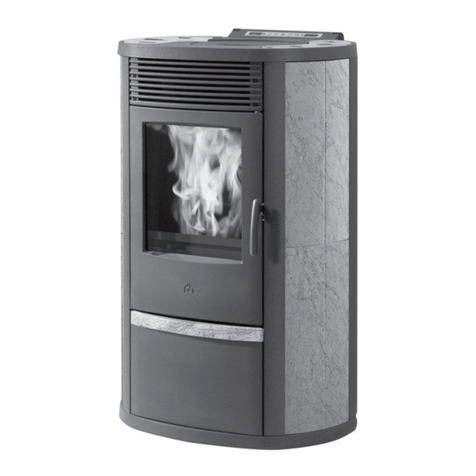
EdilKamin
EdilKamin Iris Plus Installation, use and maintenance guide

Broseley
Broseley Ignite 5 Installation & operating instructions
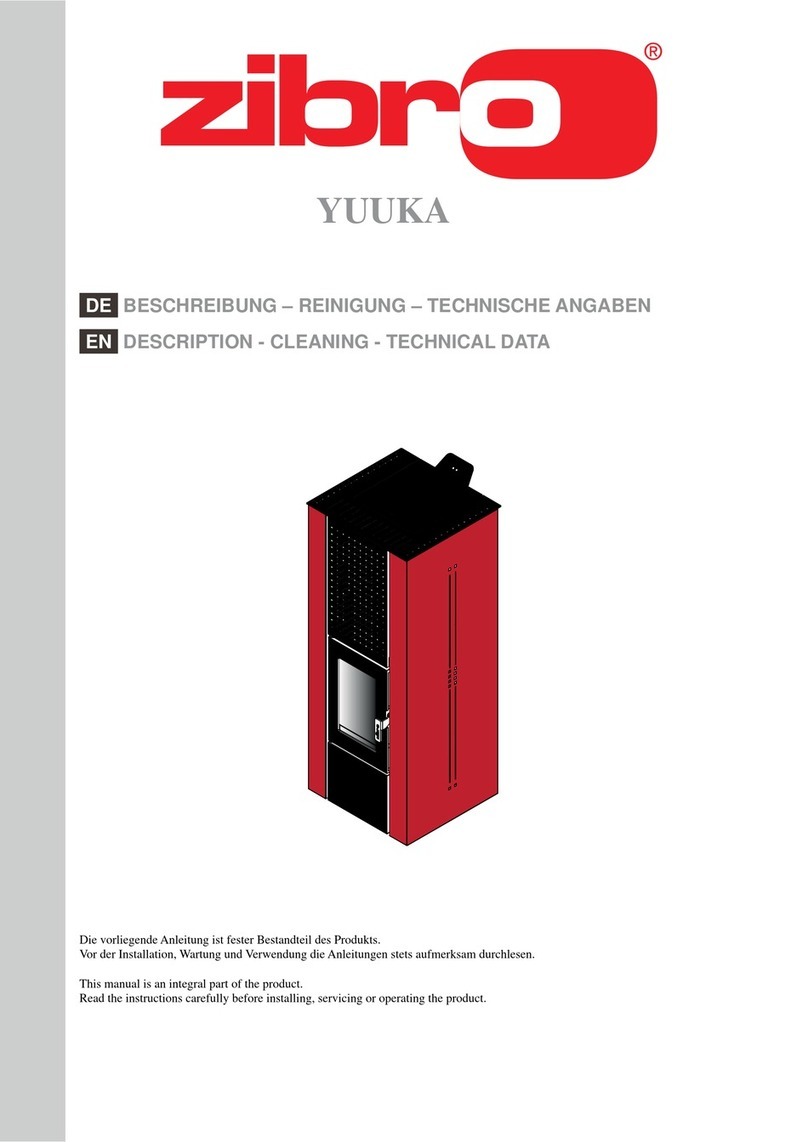
Zibro
Zibro YUUKA DESCRIPTION / CLEANING / TECHNICAL DATA
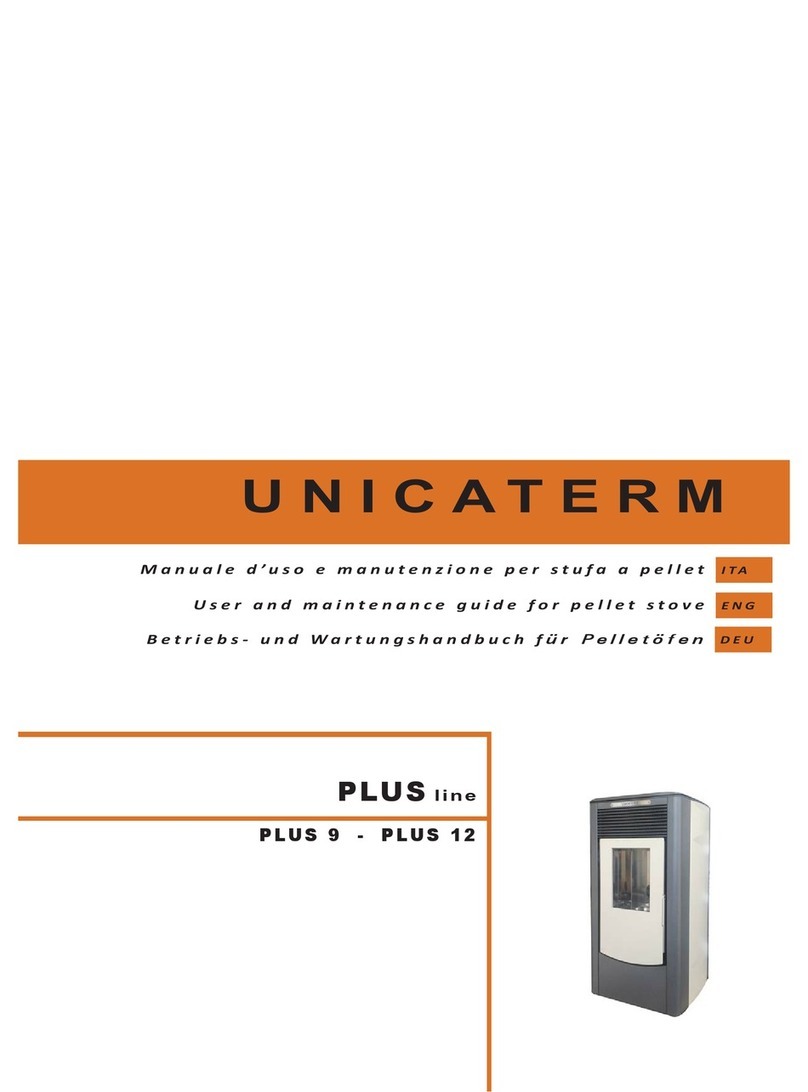
Unicaterm
Unicaterm PLUS 9 User and maintenance guide
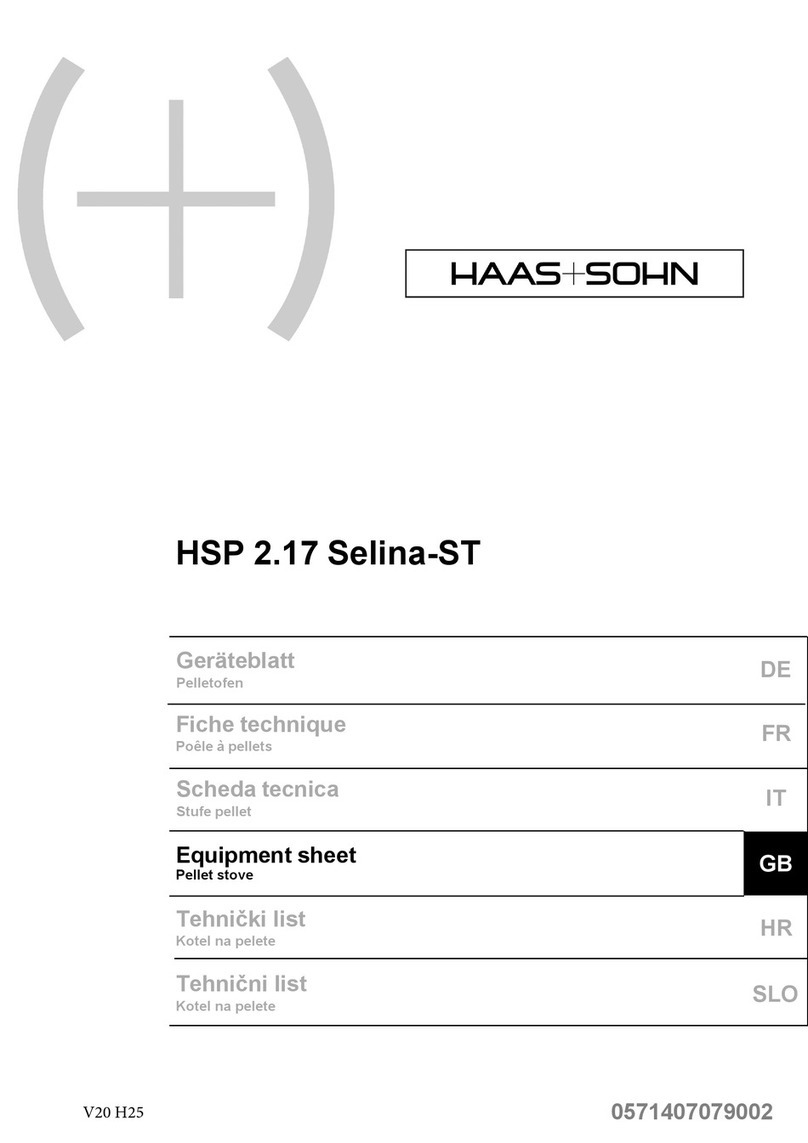
Haas+Sohn
Haas+Sohn HSP 2.17 Equipment sheet
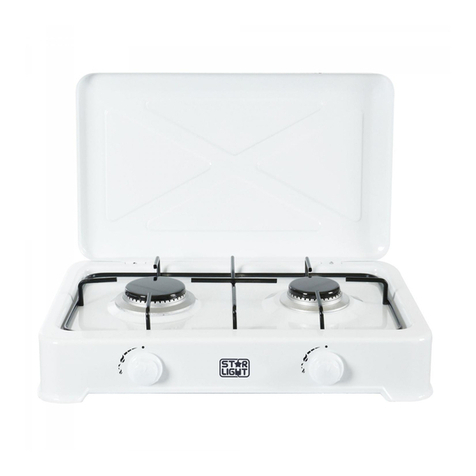
starlight
starlight FCF-02WH user manual

Magic Chef
Magic Chef 7858XRA Use and care
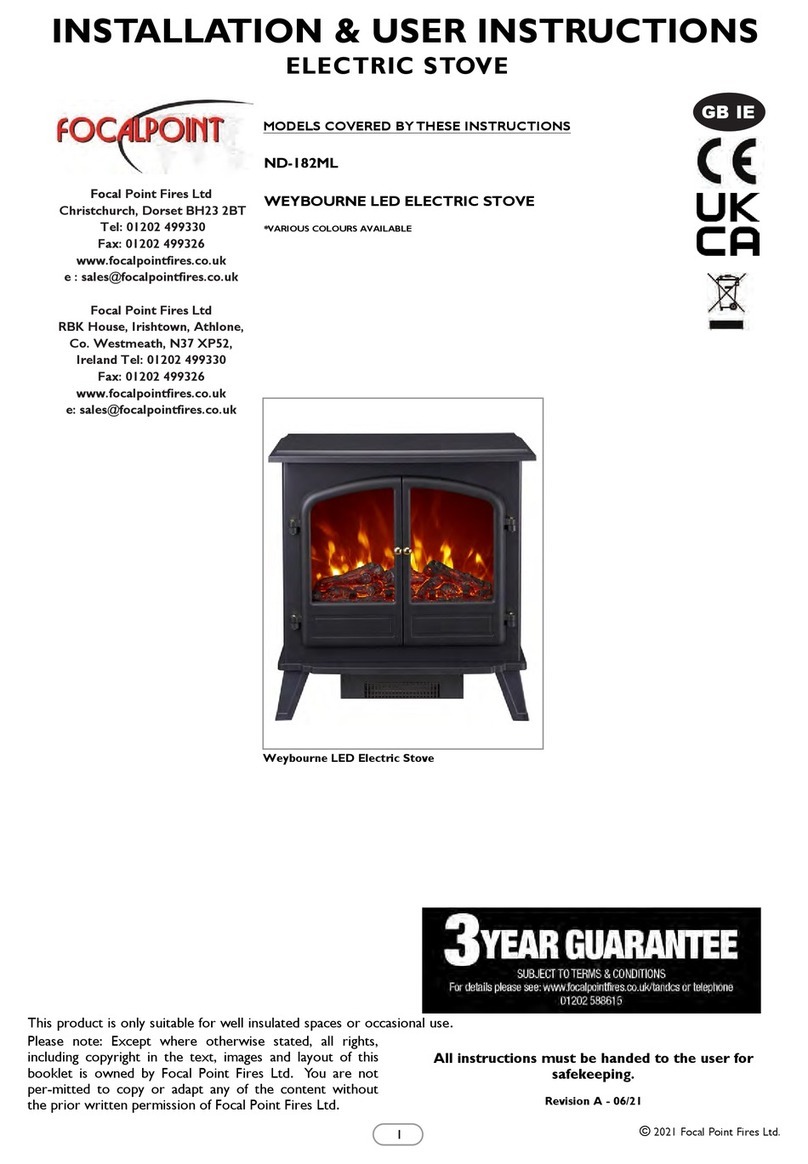
Focal Point
Focal Point ND-182ML Installation & user's instructions
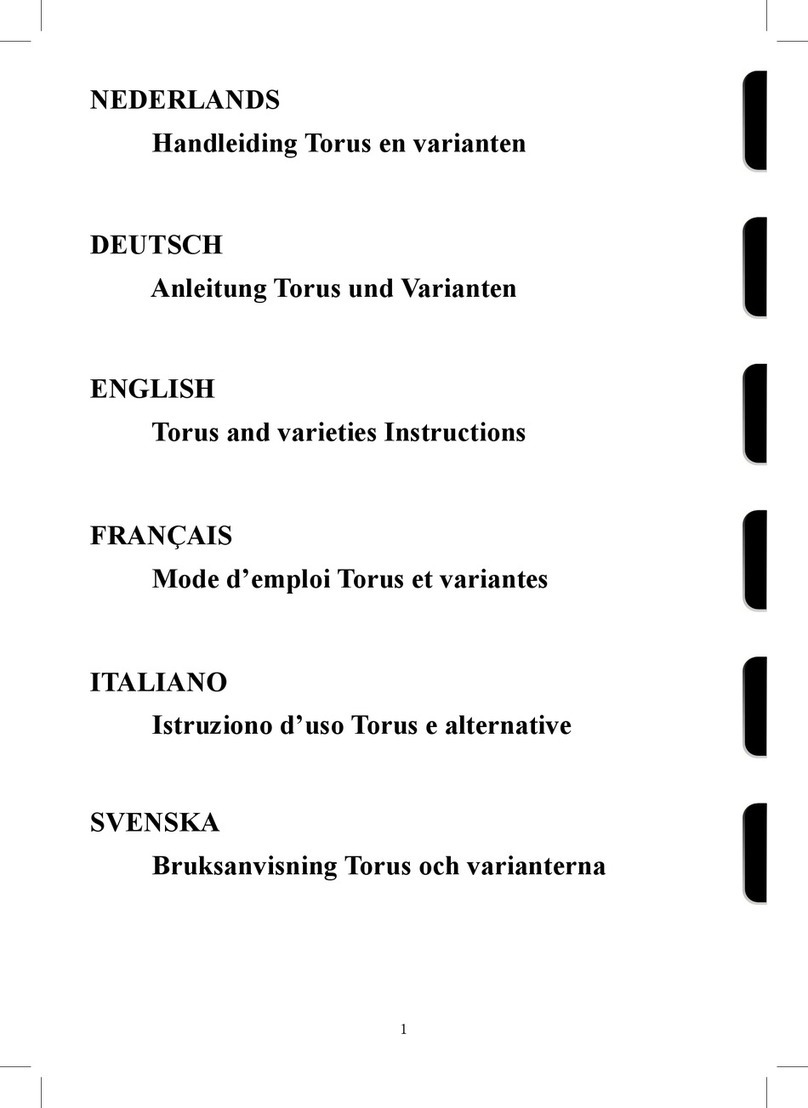
AL Tech
AL Tech TORUS instructions
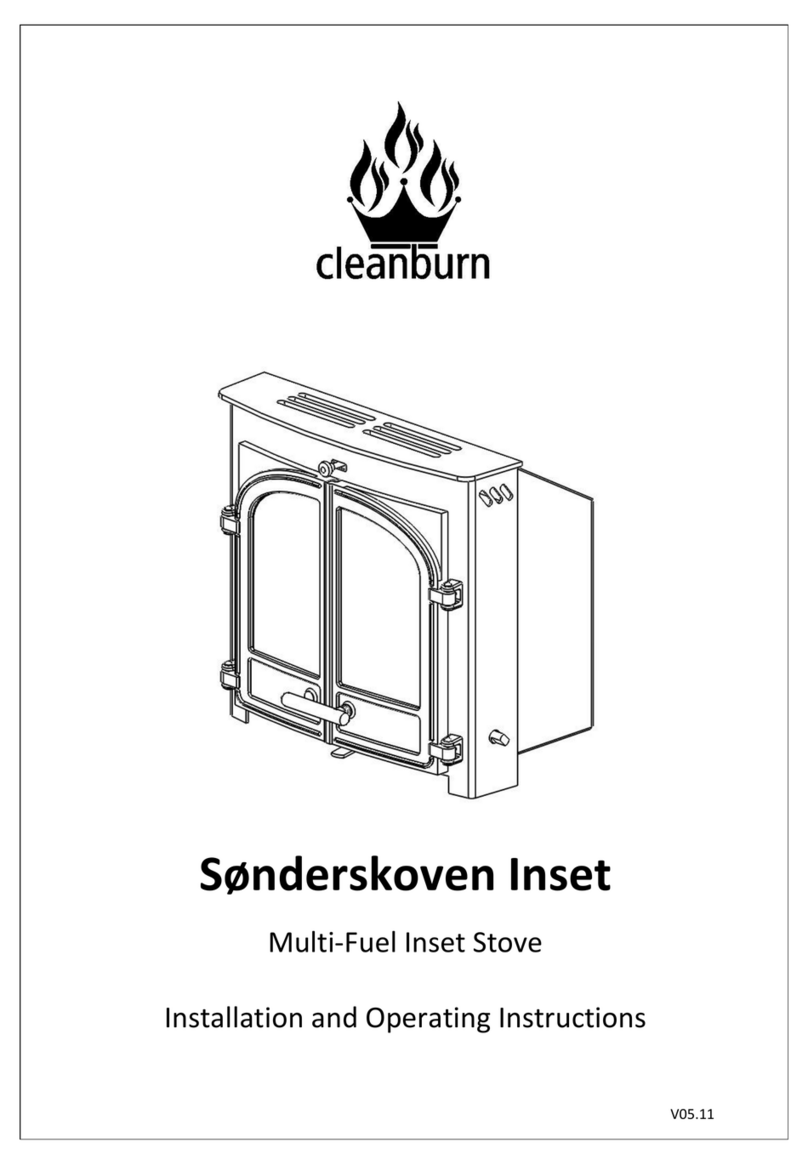
Cleanburn
Cleanburn Sonderskoven Inset Installation and operating instructions
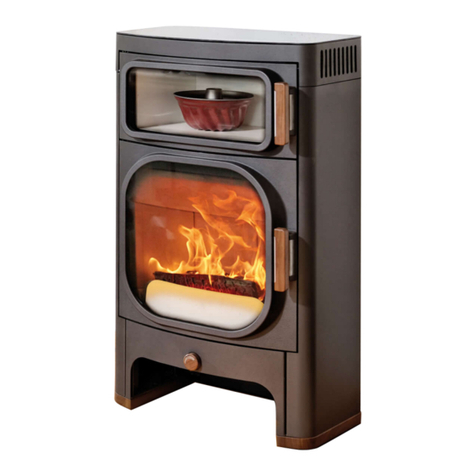
Austro Flamm
Austro Flamm Heidi Back 2.0 operating manual

Alfa Plam
Alfa Plam Elita Instructions for installation and use


